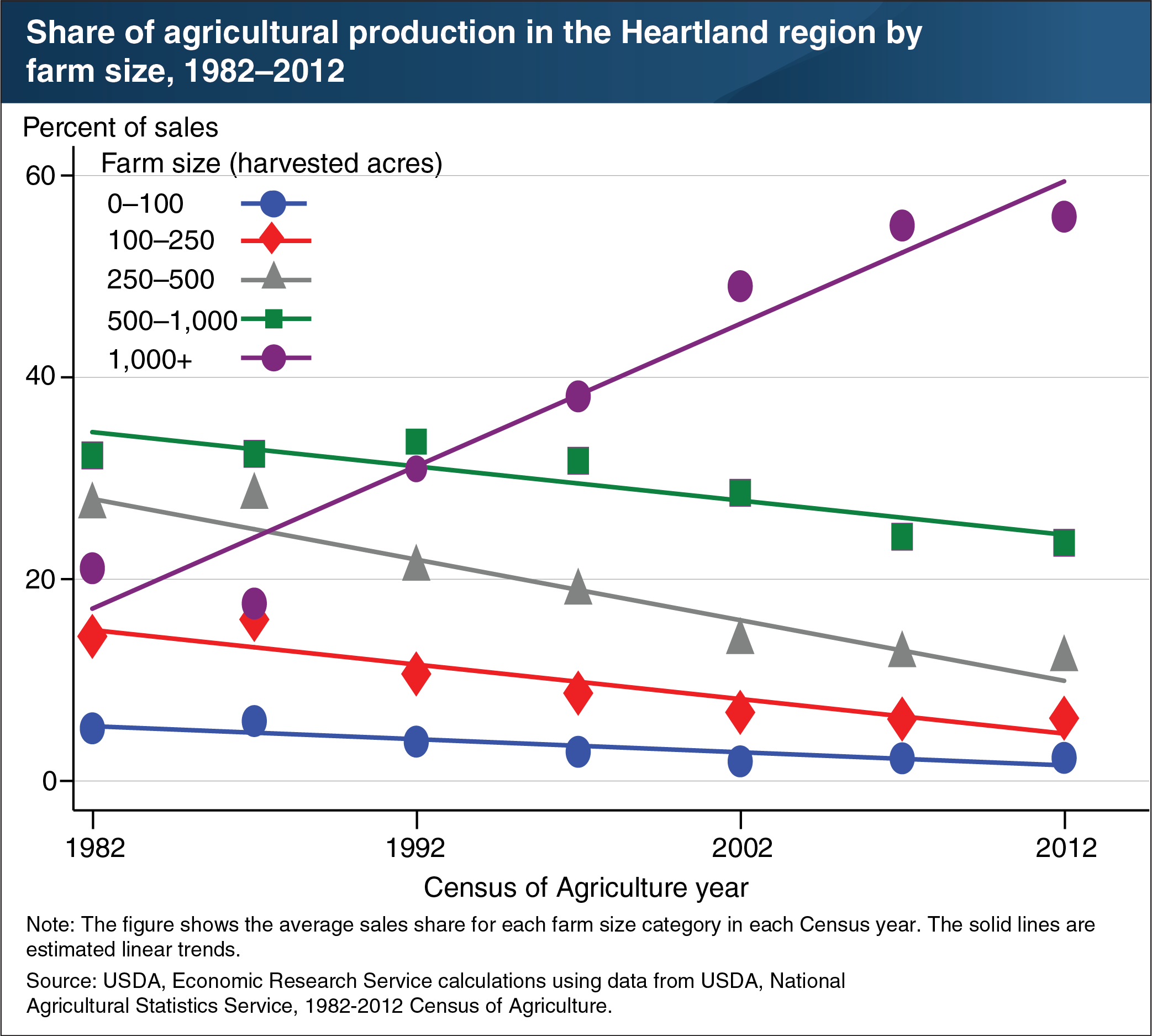Crop production in the Heartland has shifted to farms with at least 1,000 acres
- by Nigel Key
- 3/19/2019

Past ERS research on consolidation in the U.S. farm sector has documented a widespread shift in agricultural production to large-scale operations. This structural change has likely been partly driven by productivity advantages enjoyed by larger operations. Recent ERS research examined consolidation trends in the Heartland region—which includes all of Iowa, Illinois, and Indiana, and parts of Minnesota, South Dakota, Nebraska, Missouri, Kentucky, and Ohio. Between 1982 and 2012, the Heartland’s largest crop farms (more than 1,000 acres) increased their share of total production in the region from 17 percent in 1982 to 59 percent in 2012. In contrast, over the same period, the share of total production declined for the four smaller farm size categories. Midsized farms (250–500 acres) experienced the largest decline in market share, falling from about 30 percent in 1982 to 10 percent in 2012. In aggregate, the productivity of crop farms in the Heartland region increased by 64 percent, or 1.5 percent per year, between 1982 and 2012. ERS researchers estimate that about one-sixth of this productivity growth was attributable to the shift in production to larger farms. This chart appears in the December 2018 Amber Waves feature “Productivity Increases With Farm Size in the Heartland Region.”


